Blog » Travel Guides » When to Visit Hue: ...
When to Visit Hue: Best Seasons, Festivals, and Insider Travel Tips for 2025
Discover the best times to visit Hue with this comprehensive guide covering seasonal weather, key local festivals, and insider tips to avoid crowds. Learn how each season uniquely shapes the cultural and travel experience, helping you plan a comfortable and memorable trip to this historic city.
Key Takeaways
- The best time to visit Hue is from January to April for mild weather, minimal rain, and major festivals like Tet Lunar New Year and the biennial Hue Festival.
- The rainy season from September to December offers fewer tourists and cheaper accommodations but requires flexibility due to frequent downpours and possible flooding.
- Booking accommodations 2 to 3 months in advance is crucial during busy seasons, especially the festival periods, while off-peak seasons allow more flexibility and last-minute deals.
- Hue’s transportation options include public buses, taxis, motorbike rentals, and traditional cyclos, with motorbikes recommended only for experienced riders, especially during wet conditions.
- To experience authentic local culture year-round, visitors should explore traditional markets, attend daily temple rituals, and participate in workshops or cooking classes focused on Hue’s imperial cuisine.
- Travelers aiming for eco-friendly trips can reduce their environmental impact by choosing eco-certified hotels, using green transport like walking or biking, and supporting local artisans and community-based tourism.
Thinking about a trip to Hue?
Picking the best times to visit Hue can seriously up your travel game. Whether it’s soaking in the historic vibes, enjoying the stunning scenery, or catching a breeze by the famous Perfume River, when you go really shapes how much you get out of it.
In this guide, we’re diving into the seasons, top festivals, and some insider tips to help you nail down the perfect time for your 2025 adventure.
Love lively cultural happenings like Tet Lunar New Year or the Hue Festival? Or maybe you’re all about chill, budget-friendly trips with fewer crowds?
Whatever your style, we’ve got the deets on when to go, what to pack, and how to deal with Hue’s unique climate.
Get ready to find that sweet spot between weather, crowds, and festivities so your journey through Hue’s imperial past, breathtaking views, and rich traditions will be nothing short of unforgettable.
Best Time to Visit Hue: Overview and Travel Highlights

Why Timing Really Matters for Your Hue Trip
Figuring out the best times to visit Hue really depends on what you want from your trip. Timing affects everything — the weather you’ll deal with, how packed the tourist spots get, and which cultural events will be going down. Planning your visit around these can make all the difference between a meh trip and a fantastic one.
Hue has pretty clear-cut seasons, each with its own vibe and weather quirks. From January to April, it’s mostly dry and mild — perfect for checking out historic spots like the UNESCO-listed Imperial City without sweating buckets or dodging monsoons. The catch? This is when tourists swarm in, prices go up, and big cultural happenings like the Tet Festival and the biennial Hue Festival light up the city.
On the flip side, the rainy season from September to December means fewer tourists and cheaper stays, but you’ll want to be ready for frequent downpours and possible flooding that might mess with your outdoor plans. This period is great if you like a slower pace and don’t mind being a bit flexible with the weather.
How to Balance Weather, Crowds, and Festivals
Picking when to visit means juggling good weather with crowd vibes and festival schedules. If you want mild temps joined by exciting cultural stuff, aim for early in the year. Into beaches and fewer tourists? The hot months from May to August are your friends, especially if you want to explore places like Thuan An Beach or Bach Ma National Park.
Heads up: big events like Tet Nguyen Dan (Vietnamese Lunar New Year) usually happen between late January and February, bringing huge crowds thanks to the city’s deep-rooted traditions. The Hue Festival, which rolls around every two years in April or May, is a blast with arts, parades, and all that jazz — but book your spot early or risk missing out on good accommodation.
It’s all about smart date-picking to get the experience you want — whether that’s peaceful sightseeing, festival excitement, or wallet-friendly travel.
| Season | Weather | Crowds | Festivals | Activities | Cost |
|---|---|---|---|---|---|
| January to April | Mild, low rainfall | High (international) | Tet, Hue Festival | Sightseeing, cultural events | High |
| May to August | Hot, mostly dry | Moderate (mostly locals) | Mid-Autumn Festival | Beaches, hiking, nature | Moderate |
| September to December | Wet, cooler | Low | Few cultural events | Indoor activities, budget travel | Low |
Seasonal Weather Breakdown: Getting to Know Hue’s Climate
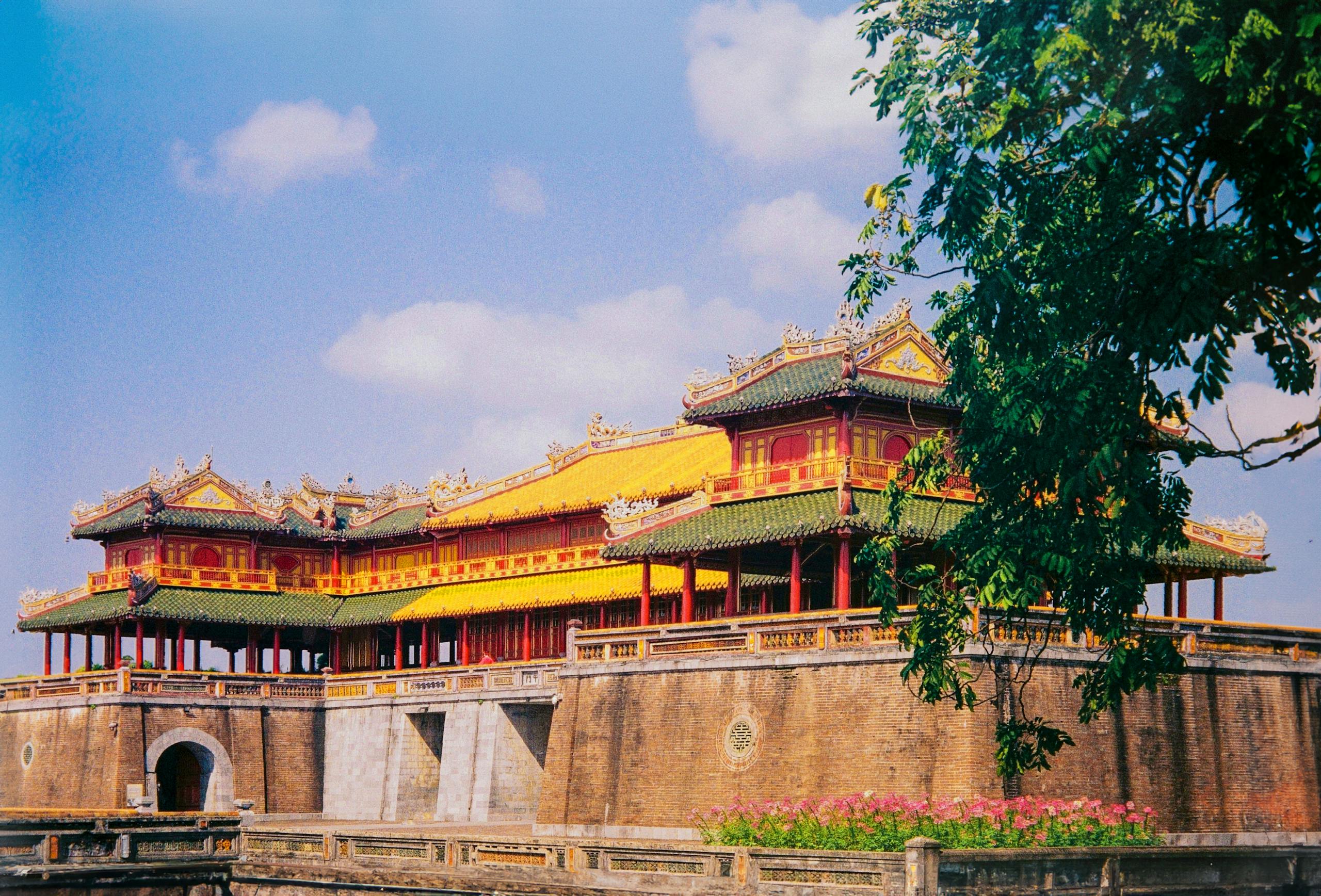
Dry Season: What to Expect and Why It’s Great
The dry season runs from February through August, and temperatures start warming up a lot between April and August. You’re looking at mostly sunny skies, pretty high humidity, and daytime highs between 22°C and a toasty 39°C+. Perfect for outdoor adventures, checking out the city’s architecture, or hitting up nearby beaches like Thuan An and Lang Co.
Just a heads-up: summer heat can be intense, so mornings and late afternoons are your best bet for exploring. Stay hydrated, slap on sunscreen, wear hats and sunglasses. This season draws heaps of tourists, both local and international, so plan accordingly.
The Rainy Season: What It Means for Your Plans
From September through January, the rainy season rolls in, with the heaviest showers in October and November. Expect frequent downpours and even some flooding here and there, which might cramp your outdoor style. Temps dip to a cooler 11°C to 28°C, giving things a more laid-back and peaceful vibe.
Rain might rain on your parade a bit, but the misty atmosphere and quieter streets have their own special charm. Indoor spots like museums, cozy cafés, and temple visits offer plenty to do. If you’re all about massive outdoor sightseeing, though, it might be best to steer clear of peak rainy months.
What Temperatures Look Like Throughout the Year
| Month | Typical Temperature Range | Season | Typical Weather |
|---|---|---|---|
| January – February | 15–24°C | Rainy to Dry transition | Cool, misty mornings, occasional light drizzle |
| March – August | 22–40°C | Dry | Warm, humid, mostly sunny |
| September – December | 11–28°C | Rainy | Cool, rainy, possible storms and flooding |
All in all, the best time to visit Hue is usually between January and April — mild temps, little rain, and vibrant festivals make it pretty ideal. You’ll want to avoid October and November to dodge heavy rains and floods. But honestly, no matter when you go, Hue shines in its own way; it’s just about planning your activities around the weather.
Month-by-Month Guide: Weather, Festivals, and What to Pack
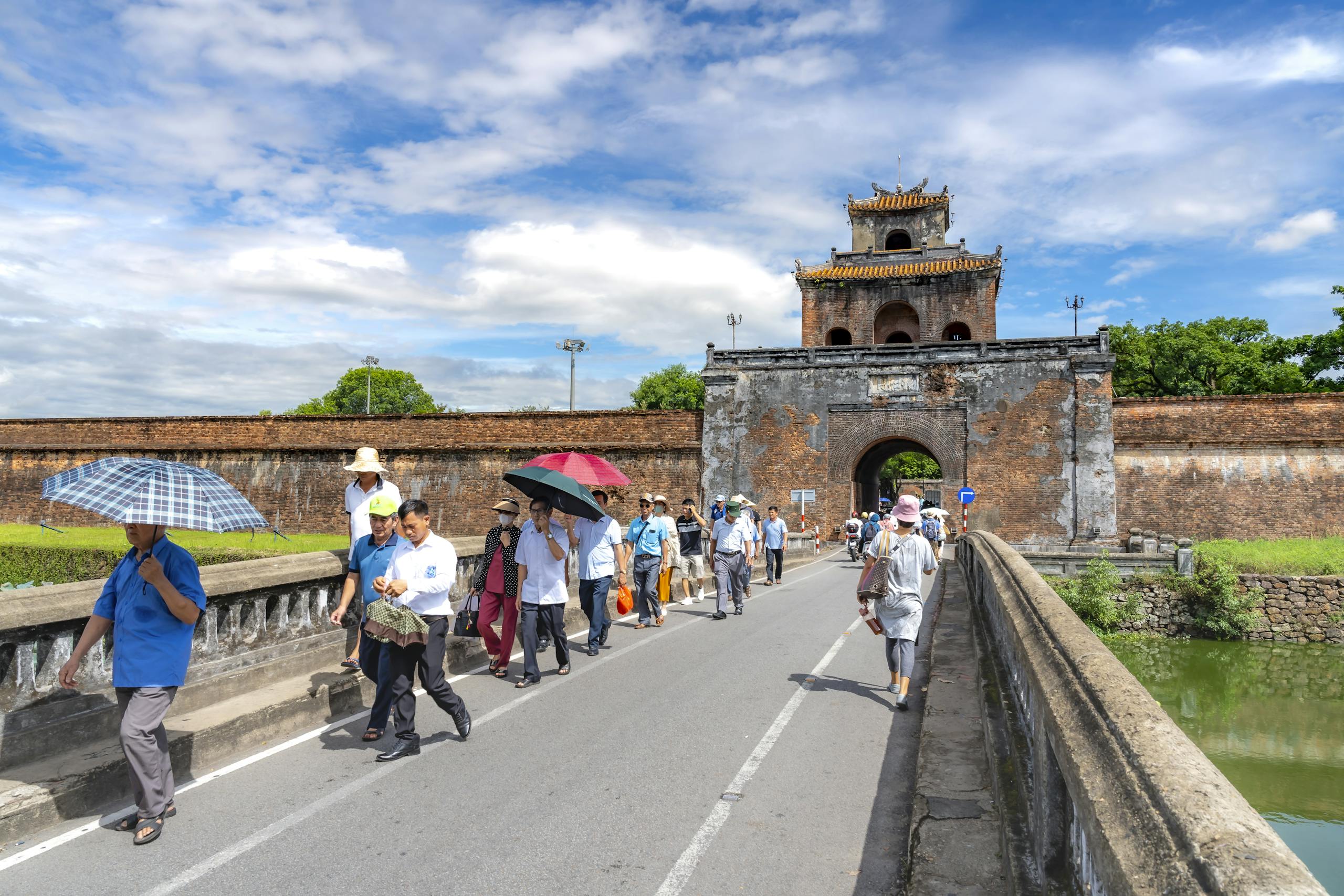
January to March: What’s Happening and What to Bring
From January through March, Hue keeps things mild and mostly dry, with temps creeping up from around 19°C in January to nearly 28°C by March. Humidity drops and chances of rain shrink, making it great for sightseeing.
The big highlight? The Tet Nguyen Dan festival, aka Vietnamese Lunar New Year, lands around late January or early February (January 29 in 2025). The city bursts with parades, bustling flower markets, and family rituals. Heads up, some spots close briefly during Tet, but it’s an unforgettable cultural dive if you time it right.
Pack some light sweaters or jackets for cooler evenings, comfy walking shoes that can handle a rare damp patch, and a light scarf for early morning river cruises or crisp mornings.
Pro tip: book your accommodation early — this season fills up fast. The Imperial City and royal tombs look amazing and are less crowded thanks to the nice weather.
April to June: Staying Cool and Festival Fun
These months kick off the hot, dry season with temps shooting up to about 36°C by June. Mostly sunny skies, though it gets stickier in May and June. The Hue Festival (every two years) usually happens late April or early May, packed with music, dance, royal court reenactments, and even imperial cuisine tastings. Even in off-festival years, the warm weather’s perfect for river cruises and sightseeing.
Pack light, breathable clothes, sun hats, high-SPF sunscreen, sunglasses—you get the idea. Sandals and swimsuits are a good shout for beach trips to Thuan An and Lang Co. Try to dodge the midday heat by doing outdoor stuff in the mornings or late afternoons, and keep water handy.
Staying near the city center or riverside means less travel time and less sunburn.
July to September: Hot, Humid, and a Bit Rainy
July to September is the hottest and most humid chunk of the year—and you’ll probably get some afternoon showers too, especially August and September. Temps in the low to mid 30s Celsius plus sticky humidity can feel brutal. Sudden storms might crash your outdoor plans.
The good news? Tourist crowds thin out a bit, mainly filled with local families on summer breaks. Early morning sightseeing is your friend, plus you can try covered dragon boat rides on the Perfume River. Don’t forget rain gear and insect repellent! Quick-drying clothes will be way more comfortable.
Flooding risk is low early summer but picks up in late September, so keep an eye on weather updates and maybe bring waterproof bags for your gadgets.
October to December: Cooler, Rainier, but Festive
These months bring back cooler temps (about 17–26°C) and heavier rains. Typhoons and flooding can happen, so stay updated on weather alerts.
But it’s not all gloom—this season has cozy festivals like the Hue Traditional Craft Festival and the Mid-Autumn Festival, famous for lantern parades lighting up the Perfume River and mooncake tastings. Perfect for getting a cozy, cultural fix despite the wetter weather.
Bring waterproof shoes, layers for the mood swings in temperature, and a good rain jacket. Museums, royal tombs, and craft workshops stay open, offering warm, interesting spots to hang out.
Lower tourist numbers mean better hotel deals and quieter historic sites—win-win!
| Period | Weather | Festivals | Packing Tips | Travel Tips |
|---|---|---|---|---|
| January to March | Mild, dry, 19–28°C | Tet Lunar New Year | Light jacket, sweater, scarf | Book early, cultural focus |
| April to June | Hot, dry, 30–36°C | Hue Festival (biennial), beaches | Sun protection, breathable clothes | Early/late outings, hydrate well |
| July to September | Hot, humid, increased rains | Summer holidays | Raincoat, quick-dry clothes, insect spray | Early tours, indoor backup plans |
| October to December | Rainy, cooler, 17–26°C | Craft festivals, Mid-Autumn | Waterproof layers, sturdy shoes | Cozy cafés, monitor weather alerts |
Hue’s vibe changes with the seasons. Pack smart, stay flexible, and you’ll soak up the city’s rich culture no matter when you visit.
Top Festivals and Cultural Events You Can’t Miss in Hue
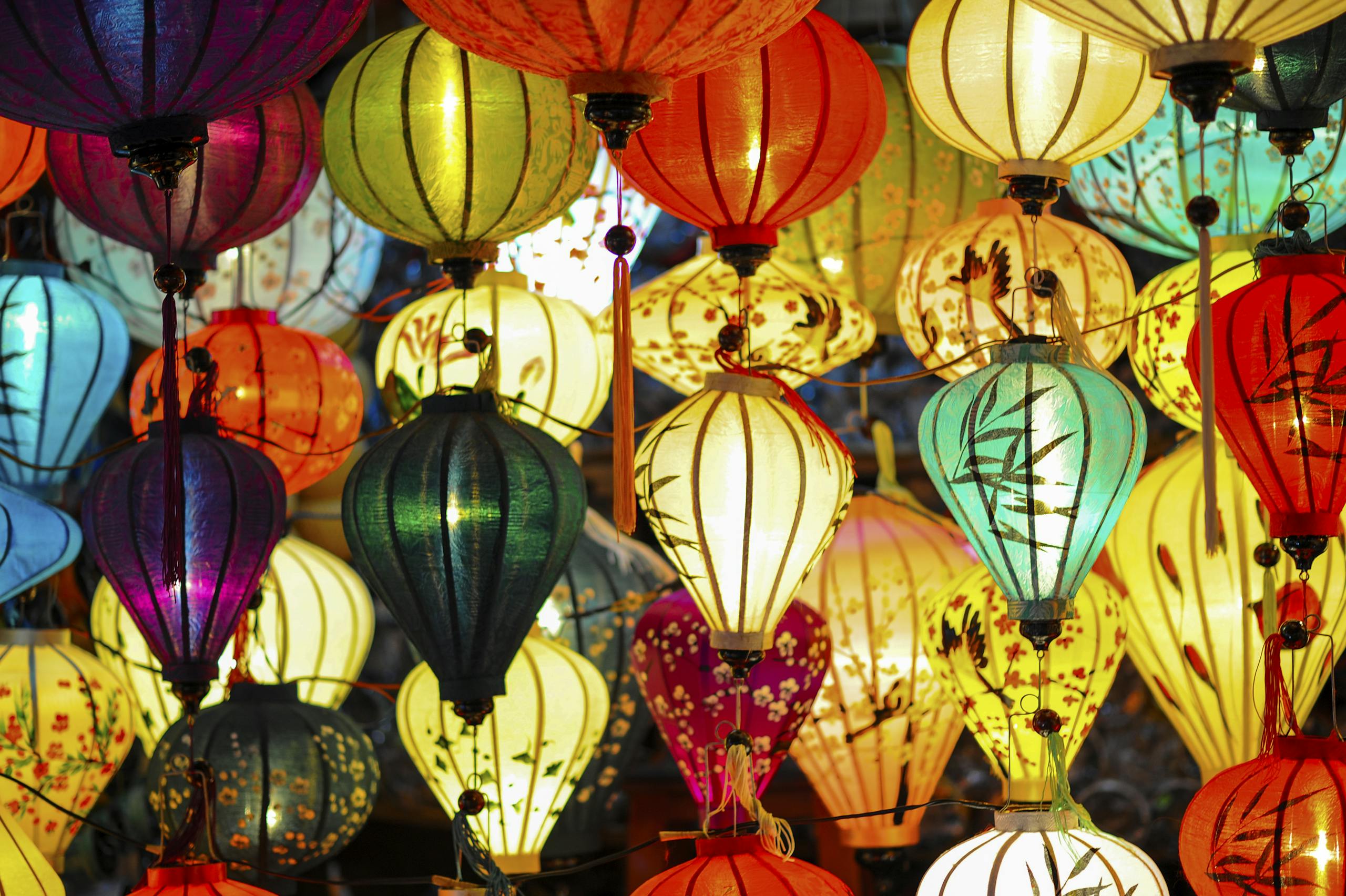
The Hue Festival: When & What to Expect
The Hue Festival 2025 runs from March 25 to April 7 and is one of Vietnam’s most vibrant cultural events. Expect a lineup of traditional music, dance, art exhibitions, and awesome food focused on imperial cuisine. There are lively street parades, Royal Night historical reenactments inside the Citadel, elegant Ao Dai fashion shows, poetry readings, and buzzing craft markets.
Held mainly at the Hue Citadel and central spots, it draws local and international artists, giving visitors a full plunge into Hue’s royal heritage and contemporary culture. If you love festivals, this is a big reason to plan your trip around spring.
Tet Nguyen Dan (Lunar New Year) Festivities
Tet Nguyen Dan is Vietnam’s Lunar New Year, usually in late January or February (January 29 in 2025). Hue gears up weeks before with ancestral ceremonies, temple visits, and flower markets decked out with lanterns and festive colors.
Special court ritual reenactments happen at the Imperial Citadel on New Year’s first day, showing Hue’s unique spiritual and cultural traditions. It’s the most important holiday that brings families together. For travelers, it offers an authentic cultural experience, though hotels and tourist spots get busier.
Mid-Autumn Festival and Other Local Traditions
The Mid-Autumn Festival or “Hue in Autumn” falls on the 15th day of the 8th lunar month (between July and September). It’s all about lantern parades along the Perfume River, lively lion dances, mooncake sharing, and kids’ parades.
This season blends imperial heritage with local folklore, making autumn a colorful cultural time to visit. Other cool celebrations include Phat Dan (Buddha’s Birthday) in spring with temple processions, and the Craft Village Festival that spotlights traditional handiwork like incense and conical hat making.
Local villages also host festivals, folk games, and boat races all year, giving travelers a real peek at community life.
| Festival/Event | Timing | Key Highlights |
|---|---|---|
| Hue Festival 2025 | Mar 25 – Apr 7, 2025 | Music, dance, parades, Ao Dai shows, crafts |
| Tet Nguyen Dan (Lunar New Year) | Jan 29, 2025 (main day) | Ancestral rituals, festive foods, temple visits |
| Mid-Autumn Festival (“Hue in Autumn”) | July – Sept 2025 | Lanterns, lion dances, children’s parades |
| Buddha’s Birthday (Phat Dan) | Spring (lunar 4th month) | Pagoda celebrations, spiritual processions |
| Craft Village Festival | Spring (dates vary) | Traditional crafts, folk games, workshops |
Enjoying Hue’s Unique Local Culture All Year Long
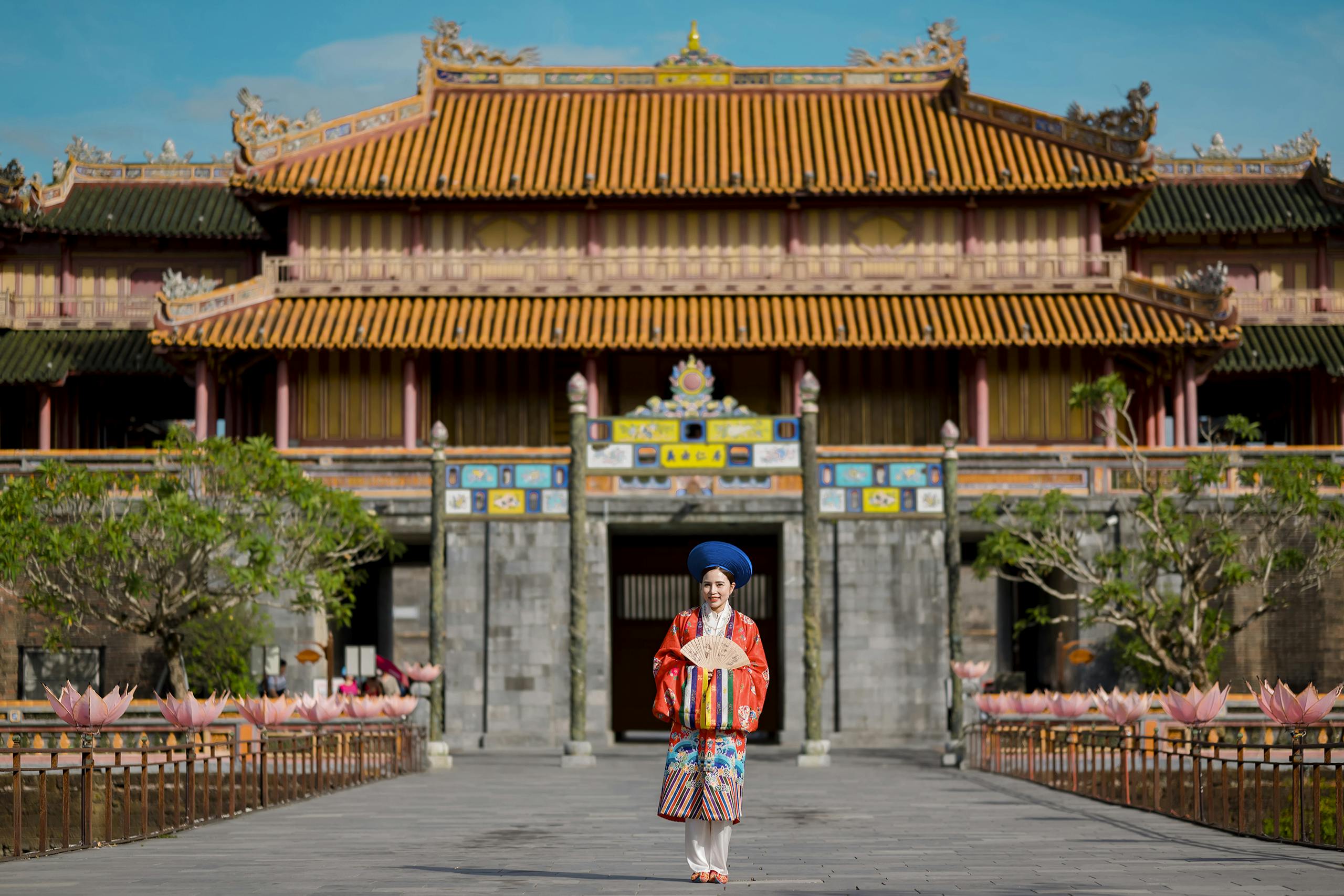
More Than Festivals: Arts, Food, and Traditions
Hue’s culture isn’t just about big events — you can tap into its imperial heritage, arts, food, and daily rituals any month you visit. Places like the Imperial City, royal tombs, and pagodas show off incredible craftsmanship and a deep history.
Nearby craft villages are great for seeing traditional skills in action—think conical hats, incense sticks, and ceramics, all passed down through generations.
And man, the food! Hue’s famous imperial cuisine is subtle but artful. Taking a cooking class combined with a market trip to learn dishes like Bún bò Huế (spicy beef noodle soup) and Bánh bèo (steamed rice cakes) is a fantastic way to connect with the local culture.
Tips for Really Authentic Experiences
Want to go beyond the usual tourist spots? Hit up Hue’s traditional markets — they’re the heartbeat of community life with fresh produce, street food, and handicrafts. Biking or walking through these lively areas helps you soak in the local rhythm and chat with friendly vendors.
Catch daily temple rituals and ancestral worship at pagodas for intimate spiritual insights often missed by most travelers. Joining village festivals and folk games throughout the year reveals rural customs and warm community vibes unique to central Vietnam.
Workshops, cooking courses, and guided rural tours are also awesome ways to dive deeper into Hue’s traditions.
Seasonal Foods and Market Buzz
The city’s markets pulse with seasonal treats tied to cultural celebrations and farming seasons:
- Spring: Tet goodies like Bánh chưng (sticky rice cake) and vibrant flower markets — plus martial arts shows and royal ceremonies.
- Summer: Juicy tropical fruits and the Ao Dai Festival, with colorful markets and evening riverside vibes.
- Autumn: Mid-Autumn lantern bazaars, mooncakes, and lion and dragon dances brighten the streets.
- Winter: Hearty street food, communal music festivals, and New Year parties to warm you up.
| Season | Cultural Highlight | Food/Market Experience | Art/Tradition |
|---|---|---|---|
| Spring | Tet Festival, martial arts, court ceremonies | Bánh chưng, flower markets | Imperial rituals, hands-on crafts |
| Summer | Ao Dai Festival, riverside evenings | Tropical fruits, Ao Dai-themed markets | Sewing and embroidery workshops |
| Autumn | Mid-Autumn lantern & dance festivals | Mooncakes, lantern bazaars | Lion and dragon dances |
| Winter | International Music Festival, New Year countdown | Hearty street foods, communal events | Community gatherings, traditional music |
Hue’s heart beats all year long. From arts and food to markets and everyday culture, there’s always something meaningful waiting.
Planning Your Trip: Weather and Crowd Tips
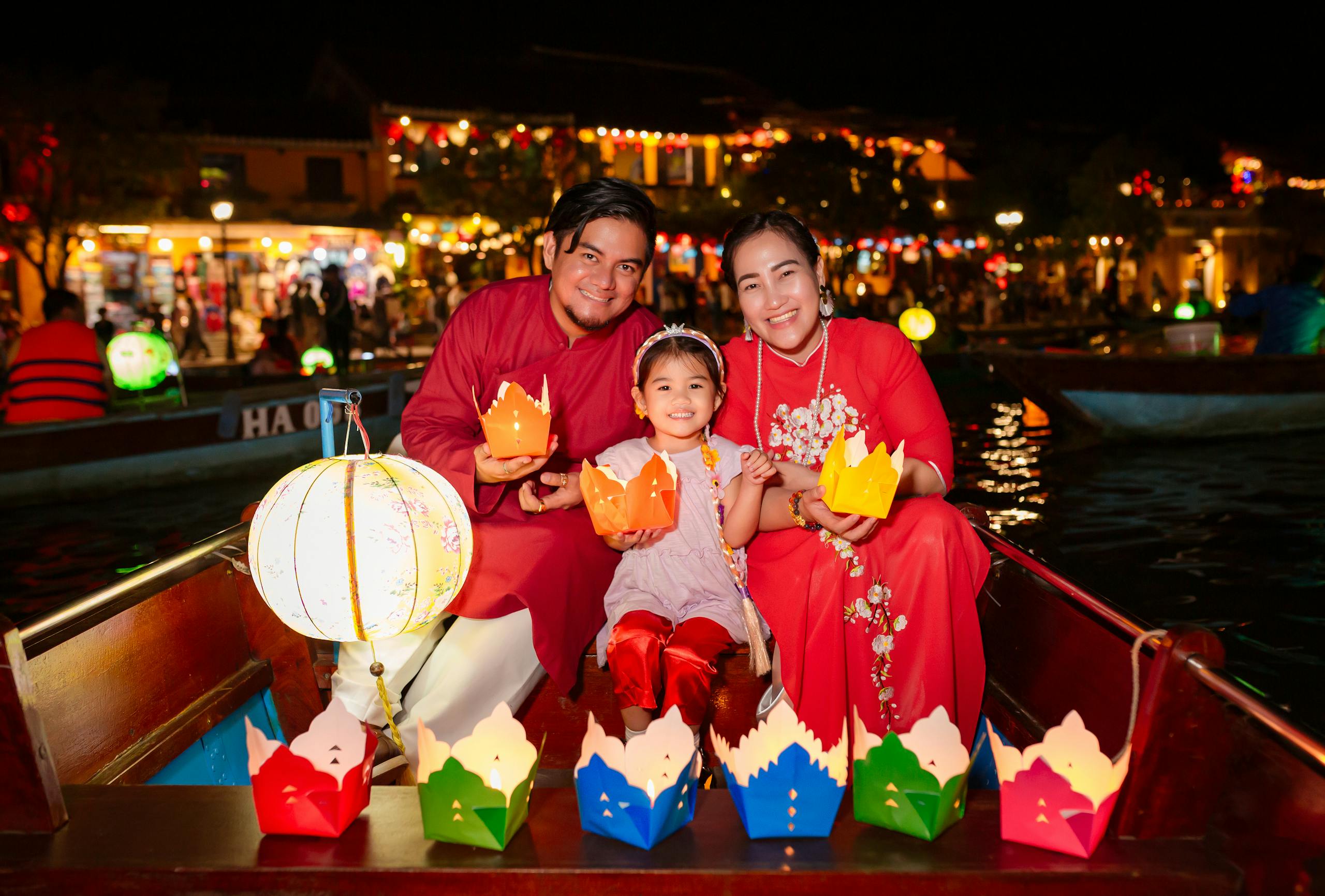
When to Skip the Crowds
If you want to dodge tourist mobs, consider the off-peak season from September to January, especially when there aren’t big local holidays or festivals. You’ll enjoy peaceful visits to hotspots like the Imperial City without the usual hustle.23
While October and November tend to be rainy, early September and late December through January usually have calmer weather and fewer visitors. Try to avoid the busy February to April stretch when international tourists flood in for the sweet weather. Summer months (May to August) have fewer international visitors but more local families on vacation.23
| Time Period | Tourist Crowds | Weather | Notes |
|---|---|---|---|
| Feb–Apr | Highest (international) | Best (mild/dry) | Very busy; pricier |
| May–Aug | High (domestic) | Hot, dry | Local holiday season |
| Sep–Jan | Lowest | Cooler, wetter (esp. Oct–Nov) | Quiet, but wetter in Oct–Nov |
For a quieter but still enjoyable trip, think early September or late December to January, balancing decent weather with low crowds.23
Weather and Getting Around
Weather can throw a wrench in travel plans, and Hue’s no exception. Heavy rains often cause flooding that can block roads and delay buses or taxis, especially outside the city. This can mess with your sightseeing schedule.135
Plus, the dry season’s heat can make public transport kinda uncomfortable, with few shaded stops. Shoulder seasons with milder weather mean smoother, less disrupted rides.123
The city is working on improving drainage, fixing roads, and adding covered stops, but it’s smart to expect some delays or detours when it rains hard.13
Booking Accommodation: Tips for Busy and Slow Times
In the busy seasons, especially during festivals and the dry months (Feb to Apr), you’ll want to book your hotel at least 2 to 3 months ahead. Otherwise, you might find high prices or no vacancy.34
Online reviews help find cool boutique hotels or vacation rentals that are quieter and more personal. For big events like Tết, book even earlier if you can.15
Off-season trips offer more flexibility and last-minute deals, but some smaller spots might close during heavy rains, so double-check before booking.15
Consider places a bit outside the city center for more peace and better prices. Always check cancellation policies and watch for special promos.15
Shoulder seasons like late Feb–April and Sept–Nov offer a nice combo of good weather, smaller crowds, and fair prices.2
What to Do Based on the Season and Weather
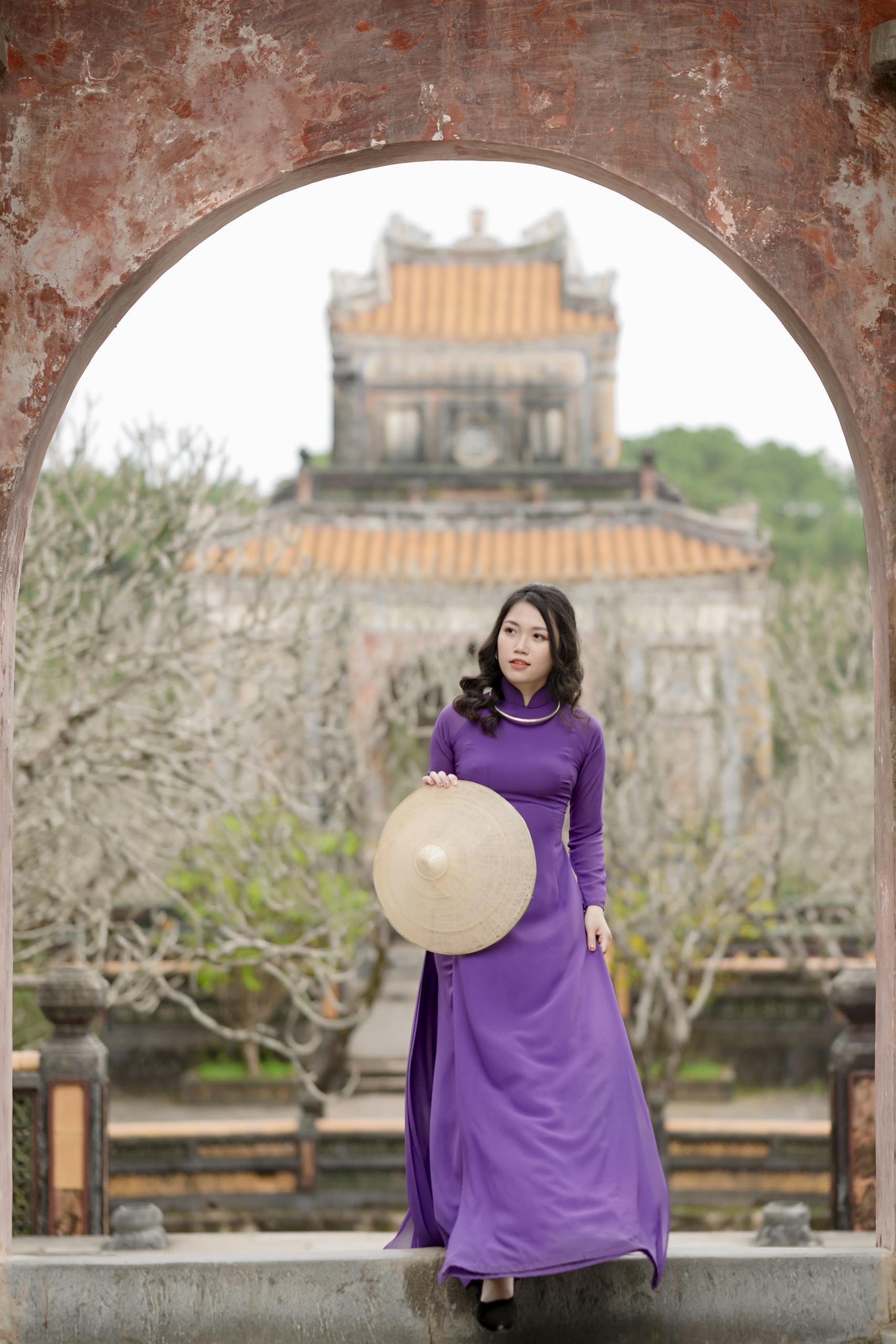
Outdoor Fun and History During Dry Months
From February to August is prime time for historic sightseeing and outdoor adventures. Clear, warm days make touring the Imperial Citadel a breeze — spots like the Noon Gate, Thai Hoa Palace, and Forbidden Purple City shine in the sunlight. History buffs and shutterbugs will love it.
The grand tombs of Nguyen Emperors such as Khai Dinh, Minh Mang, and Tu Duc are must-sees, especially in good weather with their intricate architecture and peaceful gardens. Don’t miss Thien Mu Pagoda by the Perfume River for some spiritual and scenic magic.
Nature lovers should hit Bach Ma National Park for trekking and bird watching on dry trails, or cycle around the flat city and countryside. Beaches like Thuan An and Lang Co are glorious from May to August.
Indoor & Cultural Options When It’s Rainy
When the rainy season hits (September to January/February), it’s a good time to slow down and enjoy indoor delights. The Imperial City cloaked in mist feels almost magical and less busy — great if you want quiet.
Covered dragon boat rides on the Perfume River let you stay dry while enjoying fragrant blossoms and views. Museums like the Hue Museum of Royal Antiquities offer rich history regardless of weather.
Rainy days are perfect for cozying up in cafés, sipping signature local drinks like salt coffee and aromatic lotus tea. Plus, spas, cooking classes, and culinary tours give cultural boosts without stepping outside too much. Smaller temples and pagodas offer peaceful shelter during showers.
Seasonal Perks to Look Out For
Spring (Feb to Apr) brings the biennial Hue Traditional Craft Festival, packed with artisans, shows, and hands-on workshops — perfect for culture lovers wanting to get involved.
Autumn (Sept to Nov) offers mild weather, floral scents, thinner crowds, and chill street food tours or riverside strolls amid colorful leaves.
Even in the wet season, locals and visitors dig the lush greenery, beautiful river views, and cozy literary cafés creating a special vibe. Hue reveals new cultural and natural treasures each season.
- Dry season tips: Sunscreen, lots of water, light gear.
- Rainy season tips: Waterproof stuff, focus on indoor spots.
No matter the season, Hue offers plenty of ways to enjoy its culture and beauty.
Getting Around Hue: Transportation Tips
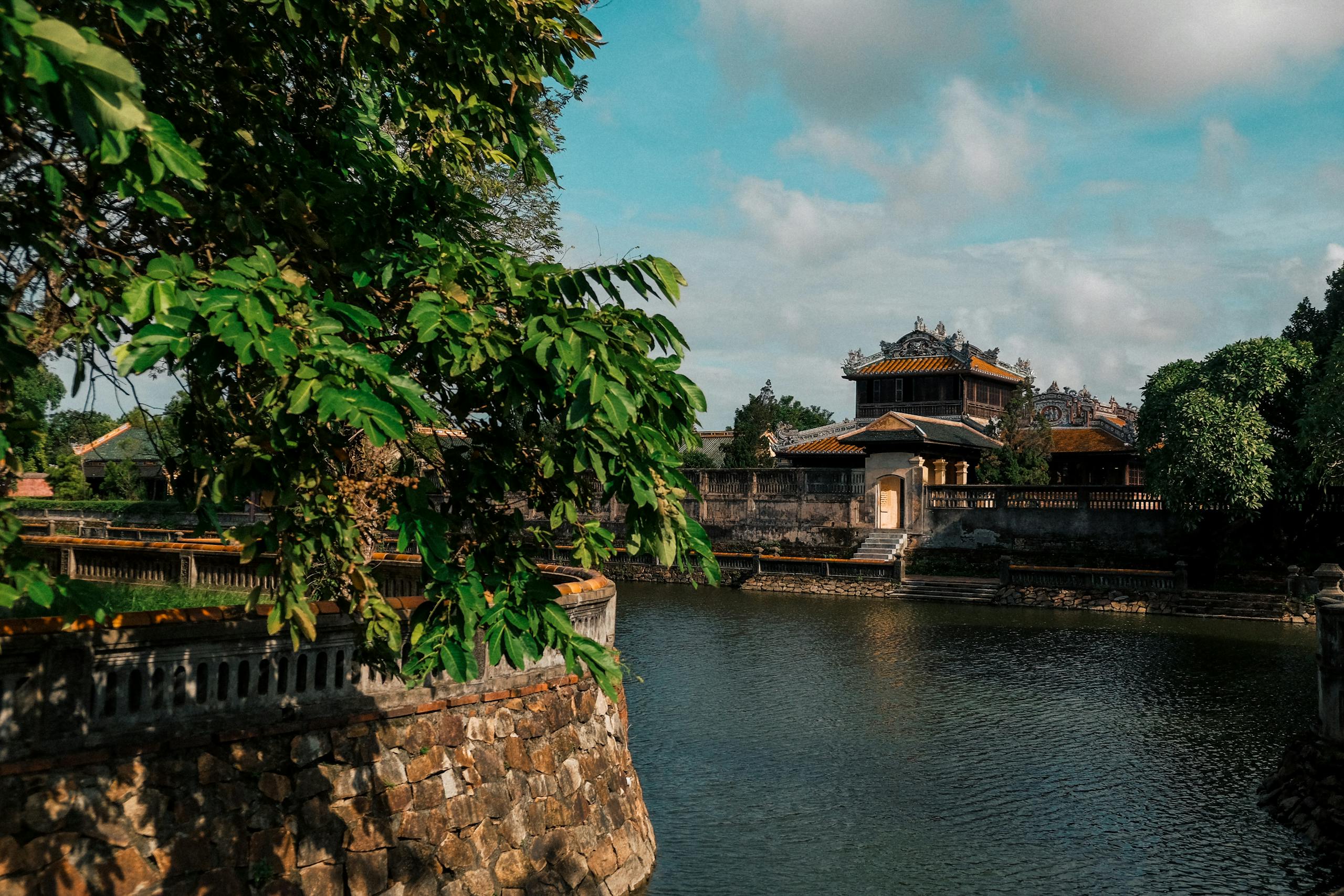
A Quick Look at Local Transport Options
Hue’s got plenty of ways to get around that suit different budgets and styles — from public buses and private taxis to motorbike rentals and those charming traditional cyclos.
Public buses cover major neighborhoods and tourist spots well. Dong Ba station is a key hub linking to the airport and places like Lang Co and Nam Dong. They’re cheap and decent if you don’t mind sticking to set routes.2
Private cars and taxis are comfy and flexible. Many drivers speak English and can take you around Hue or to spots like Da Nang and Hoi An. Very handy if you have a group, luggage, or a custom itinerary.14
Trains run through Hue on the North-South line, connecting you to Hanoi, Ho Chi Minh City, and Da Nang. The Reunification Express has different classes to fit your style. Combining trains and taxis is great for side trips to places like Hoi An.34
Motorbike rentals are popular for the more adventurous. They give freedom to take scenic routes like the Hai Van Pass towards Hoi An but make sure you know local traffic rules — safety first.4
Booking transport or tours online before your trip, especially during festivals, helps avoid last-minute headaches.5
Bottom line: Whether you’re budget-conscious, want private comfort, or crave a motorbike adventure, Hue’s transport options have got you covered.
Handling Weather When Getting Around
Hue’s weather can throw curveballs, so adapting is key.
During the rainy season (Sept to Mar), sudden heavy rains are common. A rain jacket or umbrella is a must.4 If you’re not a pro rider, avoid motorbikes — wet roads and bridges get slippery.2 Taxis, Grab apps, or covered cyclos are safer bets. Some hotels even offer shuttle rides during heavy downpours — ask ahead.2
Waterproof shoes help a lot on wet streets. Keep an eye on weather updates so you can adjust plans if needed.2
On hot, humid days (April to August), air-conditioned taxis or private cars are lifesavers. Try to schedule outdoor activities early or late and stay hydrated.2
Extra tips: Book hotels with covered entrances and onsite dining to keep comfy if the weather turns. Private cars can double as sightseeing rides and help dodge weather surprises.1
Grab works year-round, though prices might bump up a bit in bad weather. With these tricks, your travels in Hue stay smooth, rain or shine.
Safety, Health, and Comfort Tips
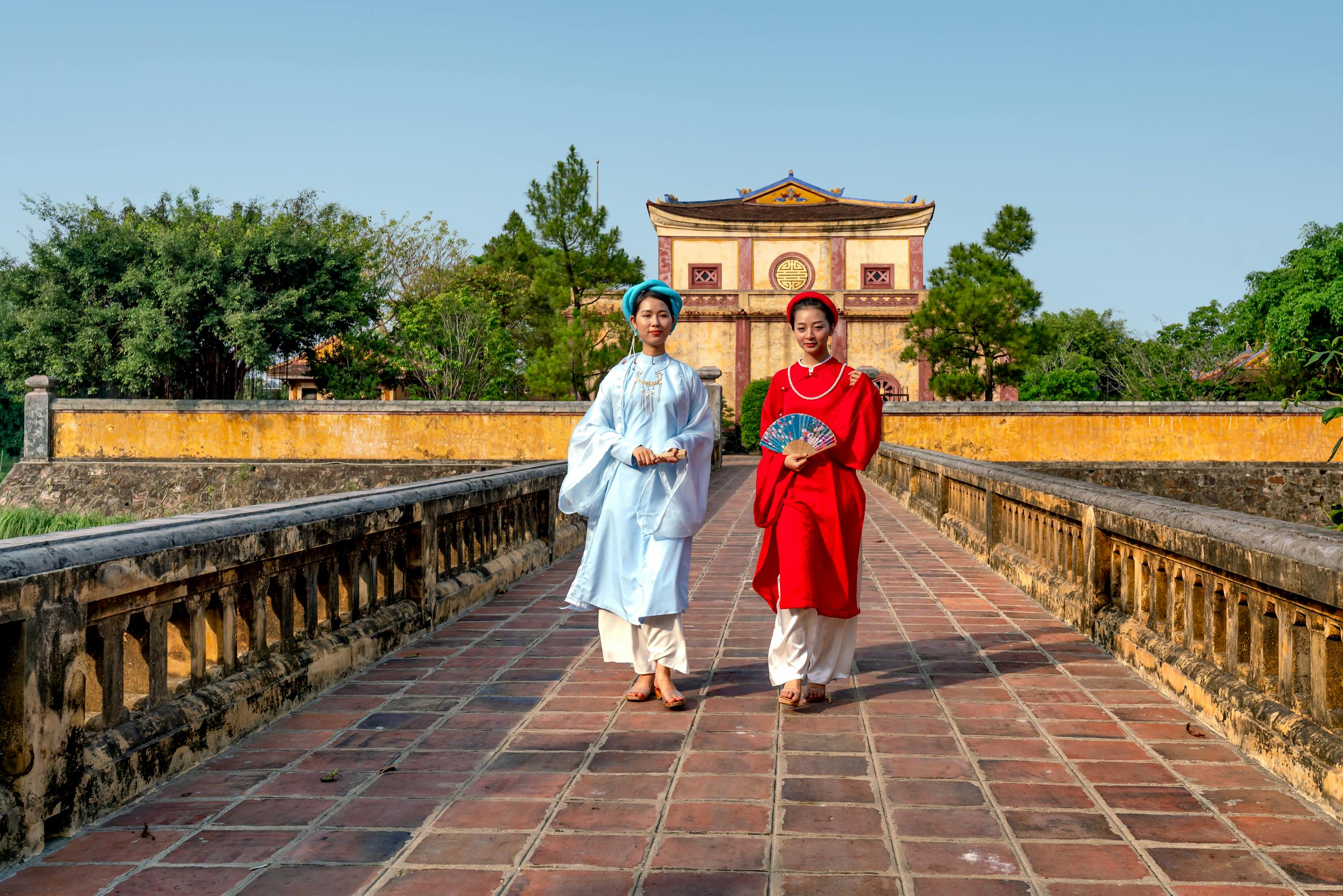
Health Tips for Hue’s Seasons
Hue’s changing seasons mean you should watch your health a bit. From May to November, mosquitoes are more active, so bring insect repellent with DEET, wear long sleeves, and maybe use mosquito nets at night.
UV rays stay strong year-round, so sunscreen is a must no matter the weather. Waterproof jackets or umbrellas help with the rain, and shoes with good grip are key to avoid slips on wet streets.
Staying Safe Through Storms and Rain
Avoid swimming or wading in the Perfume River during storms — currents get dangerous and water quality drops. Flooded or slick streets around delicate sites like Royal Tombs can be risky, so watch your step.
Plan travel carefully; roads might close temporarily during heavy weather. Keep essential meds handy and know where clinics and pharmacies are — sometimes getting help can be tricky in storms.
General Safety in Hue
Traffic’s hectic — rentals of motorbikes or scooters are best for experienced riders only. Always wear helmets and safety gear.
Pickpocketing can happen around busy tourist spots, so keep valuables close and don’t flash pricey stuff. Using ride-hailing apps like Grab is safer for daily trips.
Be extra careful crossing roads; drivers don’t always stop. Only swim in safe zones and watch your step near riverbanks. Use hotel safes for your belongings.
- Safety essentials to pack: insect repellent, sunscreen, lightweight raincoat, slip-resistant shoes, helmet (if riding), basic meds, reusable water bottle.
- Be prepared: Know local hospital locations, emergency numbers, and have travel insurance.
Sustainable and Responsible Travel in Hue

Going Green While Exploring Hue
You can travel eco-friendly and still soak up Hue’s culture. Choose tour operators and hotels that focus on saving energy, cutting waste, and buying local. Some local companies specialize in eco-friendly trips that protect nature and culture.1
Skip single-use plastics by bringing reusable bottles and bags — it keeps the city cleaner. Pick green transport options like biking, walking, or electric vehicles to lower your carbon footprint and get a more authentic feel of Hue’s historic quarters.2
Supporting Locals and Their Businesses
Hiring local guides, dining at family-run spots, and buying souvenirs directly from artisans pumps money into the community and helps keep traditions alive.3
Try community-based tourism — visiting villages, craft workshops, or farm-to-table meals. It’s a win for cultural exchange, community income, and often supports environmental conservation.4
Minimizing Your Environmental Footprint
Respect wildlife laws, avoid products from endangered animals, and always dispose of trash properly. Join local clean-ups if you can. Many tours include fees supporting park conservation.5
Go for longer, slower travel instead of rushing, conserving energy and water while you stay — turn off lights and take short showers.1
- Pick eco-certified hotels and tours.
- Buy regional produce and crafts to support locals.
- Ditch single-use plastics with refillable gear.
- Walk or bike to reduce emissions and connect better.
- Respect heritage and nature by sticking to rules and trails.
How Hue Stacks Up Against Nearby Destinations
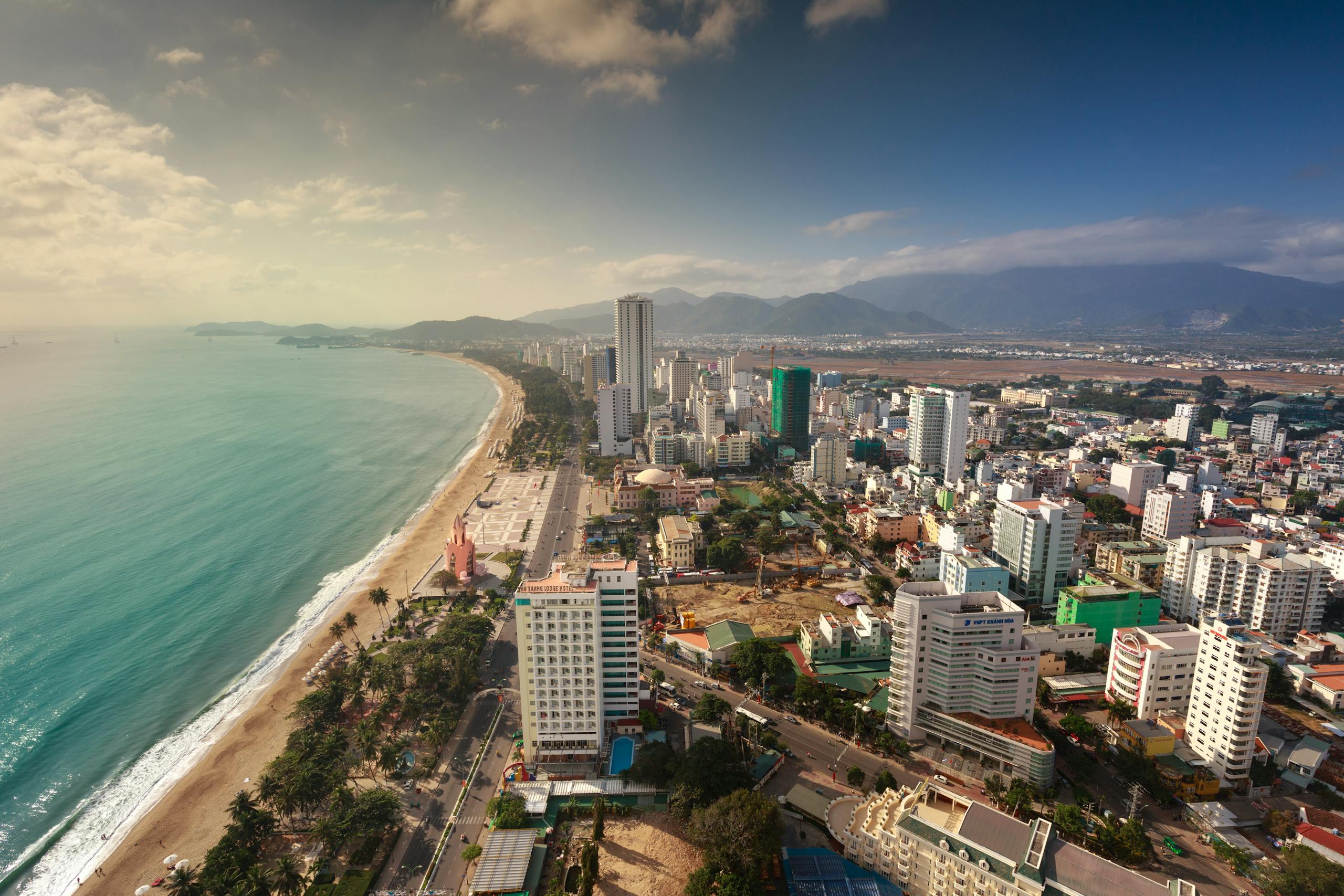
Hue’s Climate and Culture vs. Other Cities
Hue has a temperate vibe with a rainy season that starts late and lasts longer than some nearby spots. Think cool, misty weather with some flooding from Sept to Feb, and temps around 15°C early in the year. Dry season from March to August can get hot and sunny, sometimes up to 35°C.1
Da Nang, south of Hue, is warmer year-round with a more stable tropical climate. Its dry season is January to July, making it great for the beach, while summer and autumn see lighter rains. It’s a popular beach haven almost all year.2
Hoi An shares Da Nang’s climate but can flood more from Sept to Nov. Dry months are preferred here. It’s famous for its charming Old Town and romantic feel.2
Hanoi up north has four distinct seasons, cold dry winters, and hot, wet summers—very different from Hue’s mellow Central Vietnam weather.3
Culturally, Hue stands out for its imperial history as the former Nguyen dynasty capital with a UNESCO-listed Citadel, royal tombs, and traditional court music along the Perfume River. It also boasts sophisticated royal cuisine and a laid-back, less commercial atmosphere.1
Da Nang is more modern and urban, famous for beaches, landmarks like the Dragon Bridge, and lively nightlife, but lacks Hue’s royal past.2
Hoi An enchants visitors with lantern-lit streets, seafood and fusion dishes, and boutique shopping in a walkable old town feel.2
Hanoi is the political and cultural capital with bustling city life, colonial architecture, museums, and vibrant arts, contrasting with Hue’s tranquility.3
What Fits Your Travel Style?
| Preference | Hue | Da Nang | Hoi An | Hanoi |
|---|---|---|---|---|
| History & Culture | Strong (imperial heritage) | Moderate (urban) | Moderate (trading port) | Very Strong (colonial & political) |
| Culinary Experience | Traditional royal, spicy | Seafood-focused, modern | Fusion and local | Northern Vietnamese |
| Beach & Water Activities | Available but less central | Urban beaches | Nearby beaches, river | Landlocked |
| Nightlife & Entertainment | Quiet, relaxed | Vibrant, diverse | Charming, lantern-lit | Bustling, varied |
| Weather Reliability | Hot/dry, late rains | Stable dry seasons | Hot/dry but flood risk | Four distinct seasons |
| Accessibility | Regional airport, trains | Major airport hub | Near Da Nang airport | International airport |
| Atmosphere | Tranquil, riverside | Urban beach city | Romantic, historic | Energetic, urban |
If you’re into deep history and peaceful river vibes, Hue fits perfectly. For beach city buzz, go for Da Nang. Hoi An is the pick if charming, historic streets are your thing, while Hanoi is for those who want intense culture in a busy city.1,2,3
FAQs About Visiting Hue
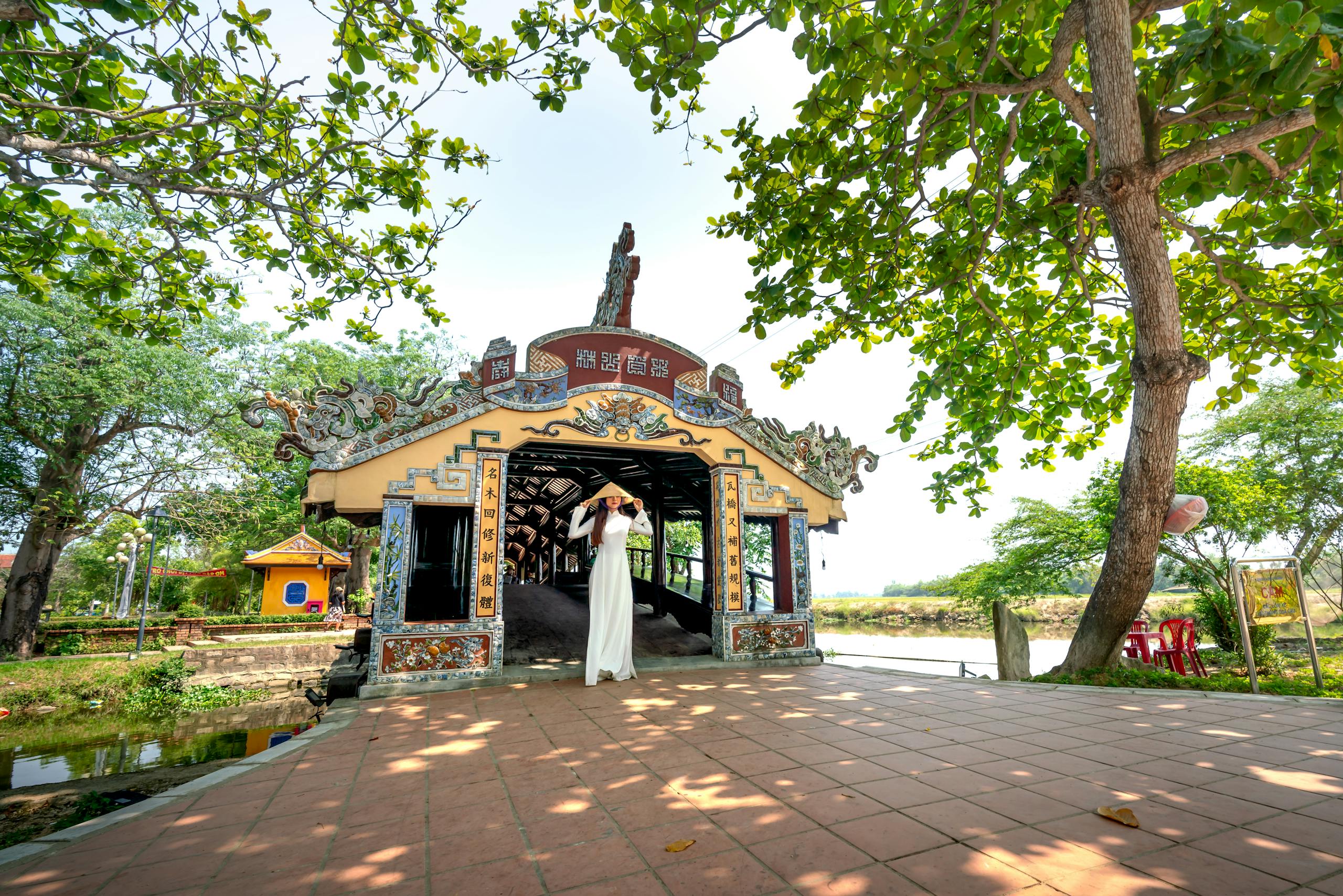
What’s the absolute best time to visit Hue?
January to April is generally the best time. You get mild days between 20 and 24°C, little rain, and major festivals like Tet Lunar New Year and the Hue Festival happening. It’s comfy and culturally rich. Avoid October and November if you want to skip heavy rains and travel hiccups.1345
What should I pack for different seasons?
- Jan–Apr (Peak): Light, breathable clothes plus a light sweater or jacket for cooler nights (can dip to 8°C). Comfy walking shoes, small umbrella or raincoat just in case.34
- May–Aug (Hot): Very light clothes, sunhat, sunglasses, high SPF sunscreen — temps hit 38–40°C. Sandals for chill moments, sturdy shoes for places like Bach Ma National Park. Bring a refillable bottle for hydration.13
- Sept–Dec (Rainy): Waterproof jacket or poncho, quick-dry clothes, waterproof shoes, bag covers for valuables. Plan for sudden showers.34
Do festivals affect travel plans?
- Tet (late Jan–Feb): City buzzes with parades and markets; some attractions close; transport gets crowded and pricier.234
- Hue Festival (biennial, late Apr/early May): Big crowds for shows and parades; book accommodation early. Best for catching rare traditional performances.24
- Mid-Autumn Festival (Sept): Lantern parades and family fun, but no big travel hiccups.2
Any safety concerns based on seasons?
Rainy/Monsoon (Sept–Dec): Watch for typhoons, flooding, and transport delays. Travel insurance and caution are wise.34
Hot/Dry (May–Aug): High heat risks dehydration and exhaustion. Drink water, use sunblock, avoid midday sun.13
General: Hue’s pretty safe but be aware of pickpockets around big crowds.
Wrapping It Up
Picking the best time to visit Hue really boils down to your weather tolerance, festival cravings, and crowd preferences. Whether you’re chasing Tet and Hue Festival energy in mild, dry months or opting for peaceful, budget-friendly rainy times, Hue charms in every season.
Knowing what to expect weather-wise, festival-wise, and travel-wise helps you craft a trip that’s comfy and packed with cultural goodness. Book early for peak times, pack smart, and dive into local traditions to get the most out of your visit.
Plan smart, and your 2025 Hue adventure will be a memorable mix of imperial history, natural beauty, and warm, welcoming vibes.
References
- When is the Best Time to Visit Hue Vietnam in 2025/2026?
- Best Time to Visit Hue: Top Seasons & Festivals Guide
- Hue Weather – Go Guides – Hotels.com
- Hue Weather – Climates by Seasons & Months
- Hue Rainy Season Guide 2025-2026: Weather & Tips
- Hue Weather & Climate | Year-Round Guide with Graphs
- Vietnam Weather by Month – Agate Travel
- Best time to visit Vietnam | weather by month – Selective Asia
- Huế Climate, Weather By Month, Average Temperature (Vietnam)
- Overview of the National Tourism Year and Hue Festival 2025 events
- Exploring the top 07 traditional and cultural festivals in Hue
- Hue Festival, Viet Nam – Mekong Tourism Coordinating Office
- Hue Cultural Events Guide: Your Vietnam Journey | FEstivation.com
- 14 unmissable festivals in Vietnam for 2025 – Holafly
- Hue: Market Tour and Cooking Class With Typical Dishes
- Hue rural markets: flavors savoring, locals engaging
- Hue Vietnam Travel Guide: A Beautiful City Along Perfume River
- Peak, Shoulder, or Off-Peak? Find Out the Best Time to Visit Hue
- Climate-Proofing Urban Bus Systems in Vietnam
- Peak season in Vietnam: Tips for your seamless travel
- Vietnam Hotel Booking Tips
- Hue Travel Guide: Experience Vietnam’s Heritage & Royal …
- A Day in Hue: Best To-Dos Vietnam
- Best Time To Visit Hue | Weather, Festivals, And More
- Top Hue Travel & Transportation Services
- Hue bus stations: Major locations, schedules & transport guide
- Transport within Vietnam
- The BEST Hue, Vietnam Public transportation tickets 2025
- Warning about dangerous things to do in Hue – Tubudd
- Travel Tips – Vietnam’s Weather – haivenu-vietnam.com
- Vietnam Rainy Season: Safe Travel & Tips | Incredible Asia Journeys
- Health and Safety | Vietnam Tourism
- Responsible Travel – Vietnam Discovery Tours
- Hue Makes Tourism Sustainable – Plastic Smart Cities
- Responsible Travel – The Terrible Tour Guide Travel in Vietnam
- Why Use a Destination Management Company in Hue for Eco-Travel?
- Responsible tourism in Vietnam
- Vietnam Weather and Climate: A Guide to the Best Time to Visit
- Weather and climate in Vietnam
- Hue Travel Guide – When to visit – What to see & do – Where to stay
- Key Takeaways
- Best Time to Visit Hue: Overview and Travel Highlights
- Seasonal Weather Breakdown: Getting to Know Hue's Climate
- Month-by-Month Guide: Weather, Festivals, and What to Pack
- Top Festivals and Cultural Events You Can't Miss in Hue
- Enjoying Hue's Unique Local Culture All Year Long
- Planning Your Trip: Weather and Crowd Tips
- What to Do Based on the Season and Weather
- Getting Around Hue: Transportation Tips
- Safety, Health, and Comfort Tips
- Sustainable and Responsible Travel in Hue
- How Hue Stacks Up Against Nearby Destinations
- FAQs About Visiting Hue
- Wrapping It Up
Get your FREE Monstera Art download
Join our WanderLife Studios mailing list to get updates about our work and be the first to know about upcoming art products.
As a Thank You Gift, you will get this wonderful hand-drawn Monstera Line Art as a digital download for FREE .
